| ■ J-PARC News - August 2017 (Issue #148) |
| ● "CP (Charge-Parity) symmetry violation" of neutrinos; growing possibility (August 4th, press conference) |
|---|
| The international T2K (Tokai to Kamioka) Collaboration group has been working to experimentally observe a neutrino oscillation phenomenon which would elucidate the characteristic differences between particles and anti-particles (CP symmetry violation). It is a key for solving the mystery of the origin of matter in the universe. Last year, we announced that the data acquired through 2016 showed a probability of characteristic difference with 90% confidence. This year, with the world's best detection capability, brought by the additional data from October 2016 to April 2017 and an application of a new analysis method, the collaboration group verified that neutrino and anti-neutrino oscillations occur at different frequencies. As a result, it was announced that the likeliness of difference in neutrinos and anti-neutrinos increased to 95%. It is even more apparent that "CP symmetry violation" can occur in leptons※. |
| * Leptons: a name for the group of particles including a family of electron, such as electrons and muons, and their associated neutrinos. |
| |

 * Click here to enlarge. * Click here to enlarge. |
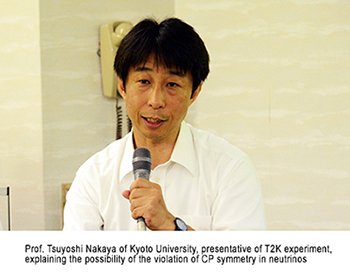
 * Click here to enlarge. * Click here to enlarge. |
| ▲to Page Top |
|
| ● A path for a solar cell design using a new semiconductor (August 10th, press conference) |
|---|
| Research groups from the Japan Atomic Energy Agency (JAEA), J-PARC Center, and the Comprehensive Research Organization for Science and Society (CROSS) have studied atomic motions of an inorganic-organic hybrid perovskite semiconductor "methylammonium lead iodide (MAPbI)" with 2 neutron experimental devices* at the Material and Life Science Experimental Facility (MLF). They found that atomic motions largely influence the energy conversion efficiencies when light is converted into electricity. The result showed that low thermal conductivity occurs by the jumping rotational movement of organic molecules. This prevents the energy of optically excited carriers from dispersing to an inorganic lattice, thus the carriers remain in an excited state for an extremely long time. This is a beneficial characteristic for solar cells. It is expected that a perovskite semiconductor, in which organic molecules are easily replaced, will guide the way to an even more highly efficient material design, thus promoting the development of future-generation solar cells. This study was published in the online version of the scientific journal from the United Kingdom "Nature Communications" in June 30th 2017. |
| * DNA, Bimolecular Dynamics Spectrometer (BL02) and AMATERAS, cold-neutron disk chopper spectrometer (BL14) |
| |
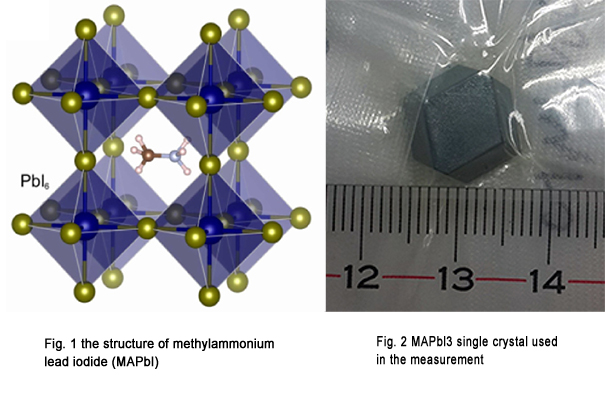
 * Click here to enlarge. * Click here to enlarge. |
| ▲to Page Top |
| |
|
| ● First in the world! Successfully obtaining highly accurate atomic images of materials for the first time, including a very small amount of light elements, using a white neutron beam. (August 19, press conference) |
|---|
| Nagoya Institute of Technology Professor Koichi Hayashi and Ibaraki University Professor Kenji Ohoyama conducted a collaborative research with Hiroshima City University, Japan Synchrotron Radiation Research Center, Kumamoto University, The Japan Atomic Energy Agency, J-PARC Center, High Energy Accelerator Research Organization (KEK), and the Institute of Materials Research of Tohoku University. They succeeded in the application of holography with a white neutron beam for the first time in the world. This holography method visualizes materials in three-dimensions by using a white neutron beam including various wavelengths of neutron beams. This development utilizes multiple-wavelength neutron beams that are generated in J-PARC and allows highly accurate atomic images to be obtained (far exceeding conventional techniques) from a number of holograms with a total of about 100 wavelengths, which were measured simultaneously. Its outstanding feature is the ability to observe structures of light element impurities from a small amount of material. Hope for breakthroughs in new material development is raised as well as understanding the functions of semiconductor materials, battery materials, and magnetic materials whose performances are controlled by added elements. |
| |
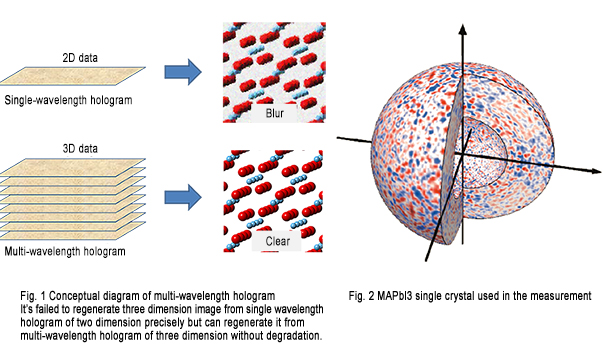
 * Click here to enlarge. * Click here to enlarge. |
| |
| ▲to Page Top |
| |
|
| ● 14th Annual Meeting of the Particle Accelerator Society of Japan (August 1 to 3, Hokkaido University) |
|---|
| The annual meeting of the Particle Accelerator Society of Japan was held, and researchers and engineers in various fields related to accelerators presented their research results and exchanged information. It was a successful meeting. There was a total of about 400 presentations this time, including oral presentations and poster presentations. About 60 of them were J-PARC related. A special lecture on the first day, "Wow! Cancer treatment, Japanese swords and batteries... secrets revealed?" was presented by 4 speakers, which was research utilizing small to large accelerator-based neutron sources. In this presentation, Masao Yonemura, Assistant Professor at KEK, reported on the development of lithium-ion batteries with a neutron experimental device (BL09) in the Material and Life Science Experimental Facility (MLF). Also, Yoshiaki Kiyanagi, Designated Professor at Nagoya University, reported on a non-destructive analysis of a Japanese sword (BL10). |
| |
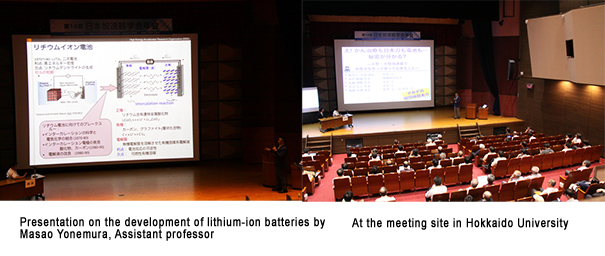
 * Click here to enlarge. * Click here to enlarge. |
| |
| ▲to Page Top |
| |
|
| ● J-PARC open house 2017 (August 20, J-PARC) |
|---|
| J-PARC Center opened its facility to the public, repeating the event from the previous year. During the summer, when the facility stops its operation, J-PARC invites the public to see the Main Ring accelerator, the Material and Life Experimental Facility (MLF), neutrino monitoring building, and the Hadron Experimental Facility, which are all otherwise off limits to the public. The weather cooperated and as many as 1,500 people visited not only from the prefecture, but also from outside. Offered events were: "J-PARC lecture", in which the audience learnt about cutting edge technologies, the "MLF Science Cafe" and the "Particle Physics Saloon" where the audience enjoyed casual talks with the researchers. The venue was filled with people. In a science experiment and crafting session, participants rode a hydrogen-fueled car, operated a radiation detector and made a kaleidoscope of light. Many families on summer break enjoyed participating in the event. In addition, there was an exhibition by Sumitomo Rubber Industries, LTD., which has commercialized ecological tires (fuel-efficient), developed by utilizing J-PARC's facilities, etc. They offered a super ball making class as well. The J-PARC lecture, presented by a manager of the Analysis Center at the Research and Development HQ of Sumitomo, Hiroyuki Kishimoto, attracted a full venue. People listened attentively to the recent research developments. |
| |
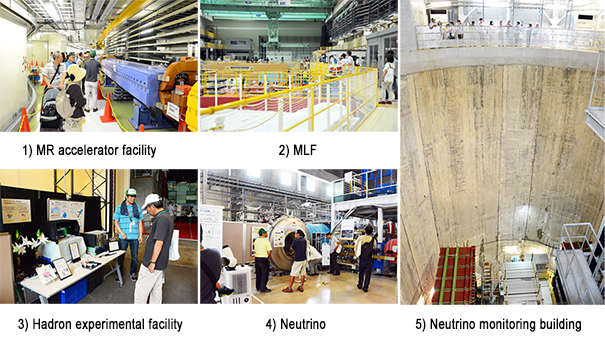
 * Click here to enlarge. * Click here to enlarge. |
| |
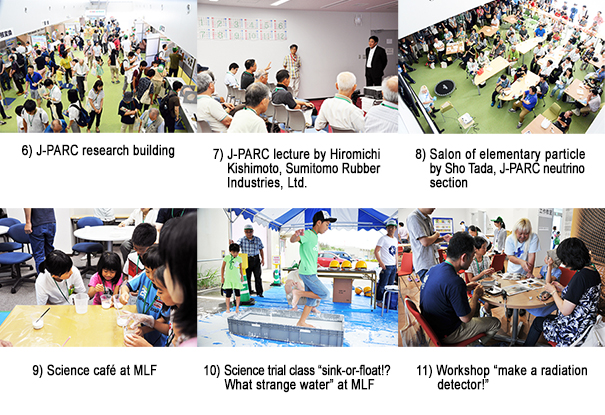
 * Click here to enlarge. * Click here to enlarge. |
| |
| ▲to Page Top |
| |
|
| ● 7th J-PARC Hello Science "A story of a superconductivity: an advanced technology supporting stupendous scientific experiments" (July 28, Tokai-village Industry and Information Plaza "iVil") |
|---|
| 7th J-PARC Hello Science was held with the theme "superconductivity" during the day, pushed forward to accommodate children on summer break. Superconductivity is a phenomenon of zero electrical resistance, which happens suddenly and starts to repel magnetic force when certain materials are cooled below a particular temperature. Many accelerator facilities around the world including J-PARC utilize various instruments which apply this strange phenomenon to conduct stupendous science experiments attempting to find the origin of the universe and matter. Five speakers who specialize in superconductivity including Masami Iio from the Cryogenics Section gave a talk on how electricity, magnetism, and superconductivity relate to each other. All the children from the audience participated in an experiment of a superconductivity roller coaster. Children enjoyed watching a superconductor run through the entire route. Nearly 170 people participated. |
| |
 |
| |
| ▲to Page Top |
| |
|
| ● J-PARC Center outreach activities |
|---|
| J-PARC Center offers "J-PARC Hello Science/Scientific Experiment Class" with various themes, such as the principle of accelerators and the mystery of neutrino oscillation. With the goal of enticing children's interest for science, we bring the class to various event venues and schools. In August, we had the following 3 events. |
| |
| ▲to Page Top |
| |
|
| ● Summer break science lab "Nothing is there, but something is there! The science of vacuum" (July 31, August 9 and 28, Tokai-village Industry and Information Plaza "iVil") |
|---|
| This summer, J-PARC "Hello Science" Scientific Experiment Class for 5th and 6th grade students from Tokai-village was held three times. For the first half of the class, children measured the weight of air and saw how close they were to the actual value. Then, together they calculated the weight of air on 1 cm2 and then actually experienced the weight by using bricks of the same weight. Children continued on to make suction using paper cups. They experimented with this suction to lift up erasers or pebbles placed in a cup. In the last half of the class, their experiment theme was the effects of no air. Children compared conditions with air and without air by observing: how free-falling objects (light and heavy) behave, audibility of sounds, how light travels and temperature changes and so on. Lastly, they did an experiment with marshmallows. A marshmallow was placed in a vacuum-producing device. In a vacuum, the marshmallow grew bigger, and it became smaller than its original size when air was added. The children enjoyed and marveled watching the marshmallow. All three times, there were as many as 20 participants, and every class was very lively. |
| |
 |
| |
| ▲to Page Top |
| |
|
| ● FY 2017 "Children's Tour Day in Kasumigaseki" (August 2 to 3, the former building of Ministry of Education, Culture, Sports, Science and Technology (MEXT)) |
|---|
| This event is jointly organized by ministries and agencies such as MEXT and offers details of operations and office tours. It is a family-oriented event, and children have an opportunity to learn about and experience society in general. In addition, it aims to increase awareness and understanding of measures administered by the ministries and agencies. This year, 25 agencies, ministries, etc. offered details of their operations and office tours, etc. J-PARC Center had an exhibition as a participating program. The exhibition booth was titled, "Zoom and Bang, Run and Hit; Experiment with a Simple Accelerator!" We explained the mechanism of an accelerator with an experiment using a "gauss accelerator". It is a device that accelerates a metal ball by magnetic force. As many as 2,000 families visited the J‐PARC Center booth. They marveled to see the exciting experiment, in which an accelerated iron ball shot at an object. There were also some questions about J-PARC's facilities. It was a good opportunity for J-PARC to introduce its research to the public. |
| |
 |
| |
| ▲to Page Top |
| |
|
| ● "Let's make a kaleidoscope of light!" (August 5, Oarai Waku-Waku Science Museum) |
|---|
| J-PARC Center held J-PARC Hello Science "Make a kaleidoscope of light!" as a summer break event at the Oarai Waku-Waku Science Museum in Oarai-machi. Tatsuya Uzumaki from the Public Relations Section instructed the class, which was held twice in the afternoon, and had as many as 90 participants, including accompanying family members. It was the first time for J-PARC to hold a scientific experiment class at this museum. However, our kaleidoscope-making class has always been very popular elsewhere, including schools. For an experiment in the three primary colors, participants were amazed to see 3 colors of water turn white after they were mixed together. Also, they enjoyed looking into their completed kaleidoscope of light, observing rainbow-colored patterns. |
| |
 |
| |
| ▲to Page Top |
| |
|
©2017 J-PARC Center. All rights reserved.
|
|